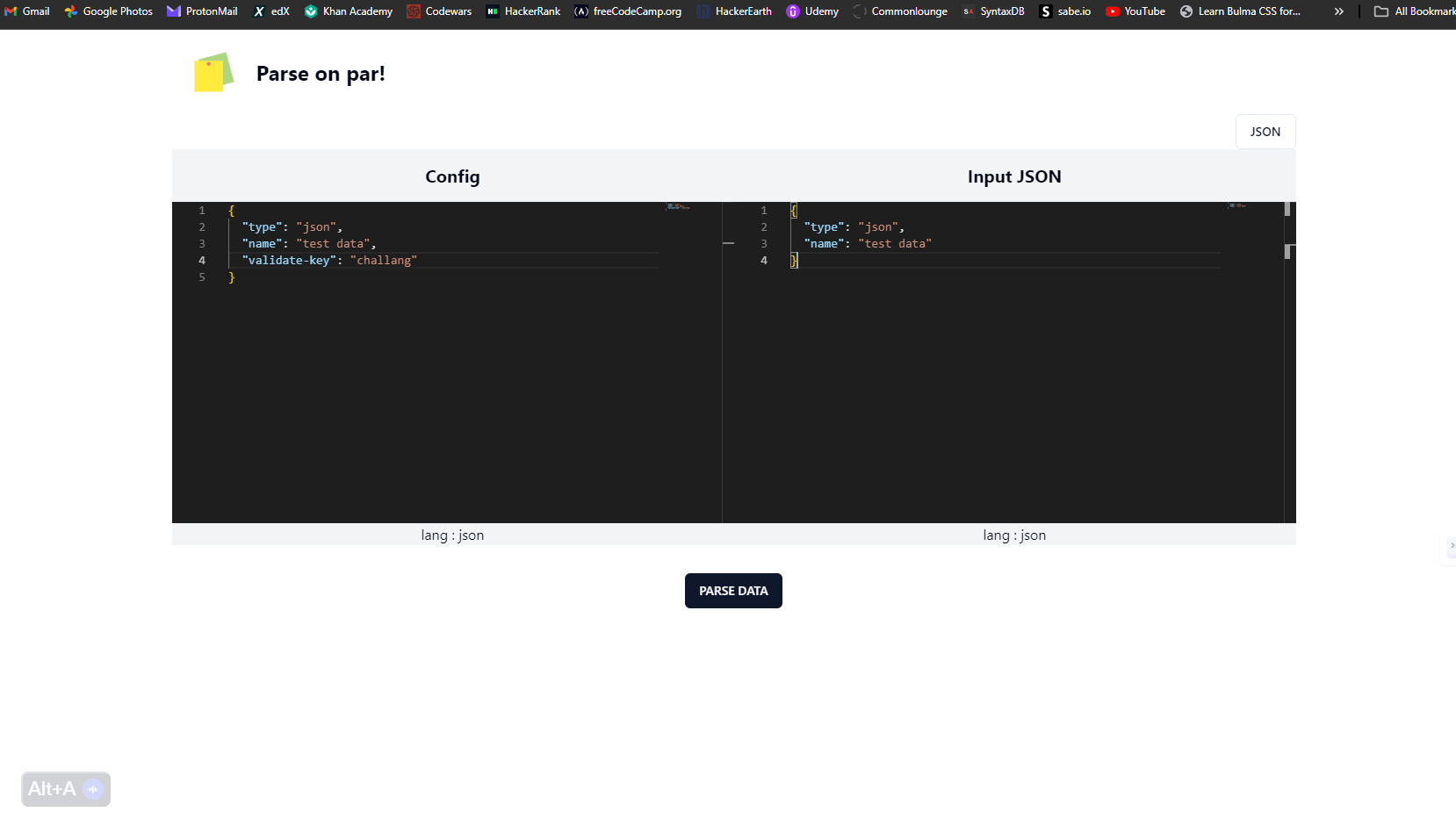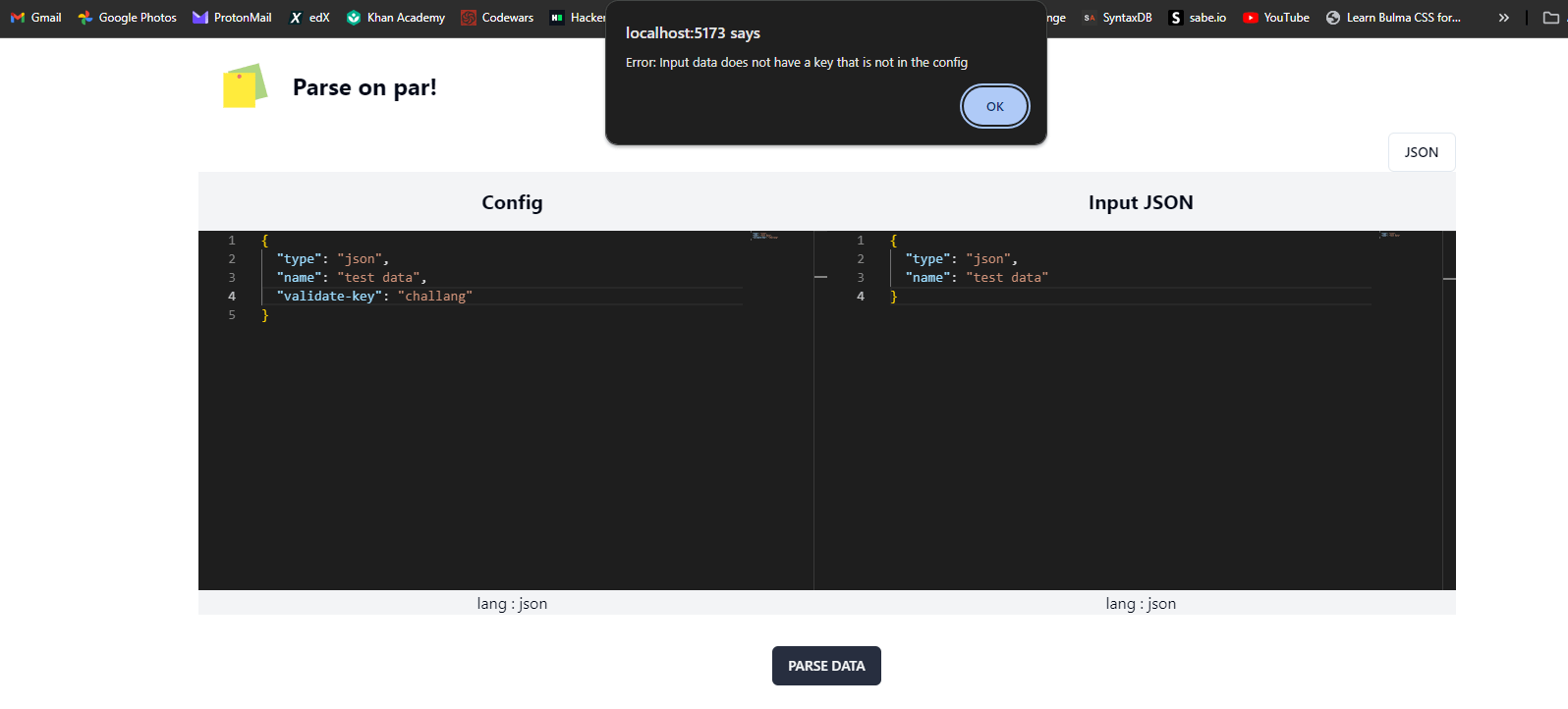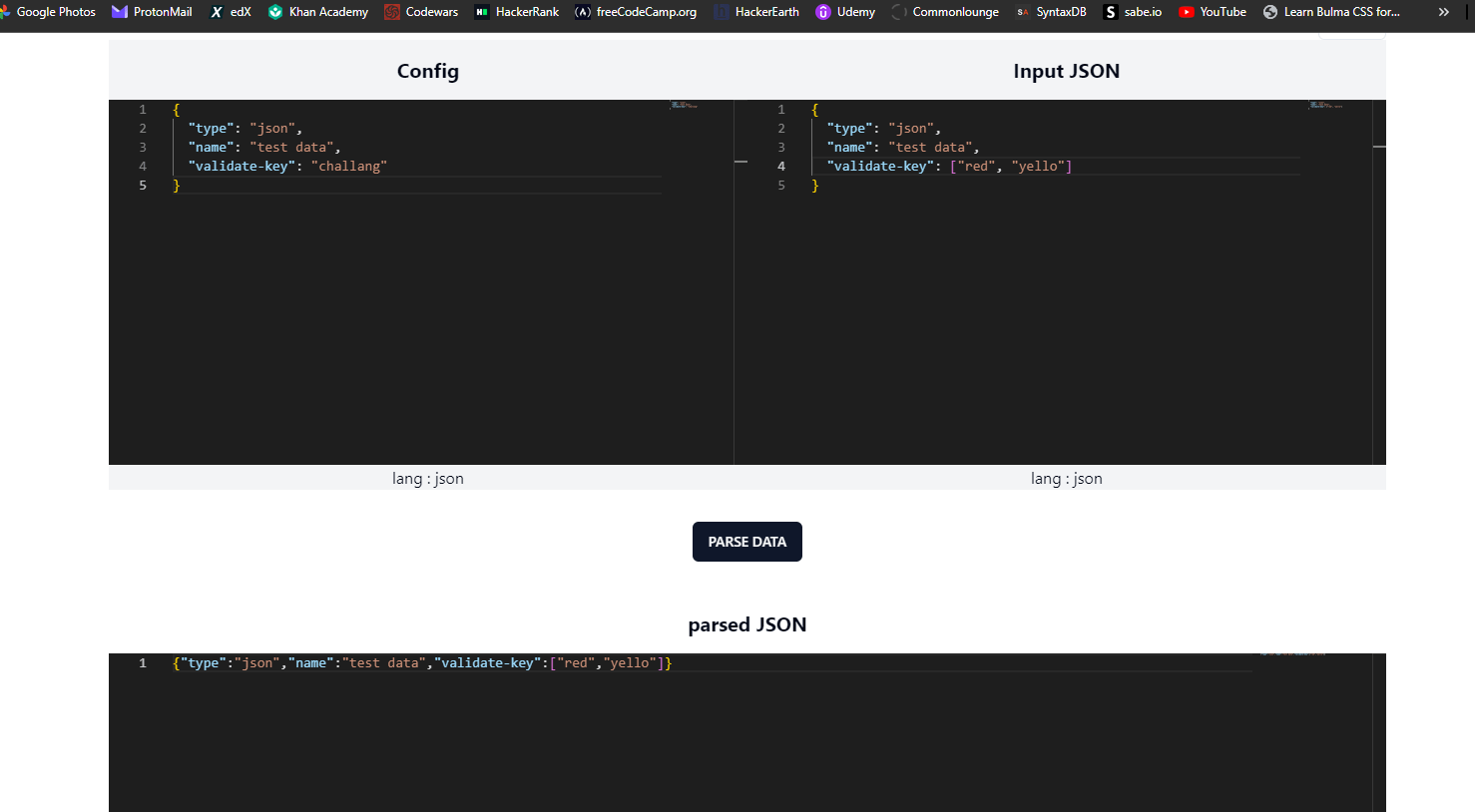Generic Parser
coders#2
Meet the Team
backend developer
Srivalli
backend developer
Shivani
frontend developer
Supriya
-
Support at least one of XML or JSON:
-
Ensure Error Handling and Validation:
-
Provide Flexibility and Customization:
-
Map the JSON structure to final tables
-
Ability to handle up to 3 levels of nesting
Problem statement
We have come up with 2 approaches to implement generic parser for JSON
- Using an open source library
- Using JS native libraries
Purpose of using 2 different ways is to showcase different algorithms for parsing and compare their run time.
These 2 approaches also differ in the way input is given to the application.
Approach I
Using Native JS Library
Clients : SBI, Kotak, Canara
End-User: Sales team, Engineering team
APIs introduced:
/register
input format:
identifier: string
jsonFile: jsonFile
/parse
input format:
identifier: string
jsonFile: json file
Flow:
Register
- Clients will call register API with identifier string and sample.json file corresponding to each client, using an API <https://localhost:3000/register>
- This will add a entry in backend and store the json structure corresponding to each client
- In this way we have a map where each key corresponds to each client and value corresponds to json structure
- After this operation we will also create a table corresponding to each client schema
Parse
- For Parsing, end user will call <https://localhost:3000/parse>
- Passed input will be verified against predefined structures in the above map
- If there is any difference in structure then all mismatched fields are returned.
- If there is a match then file is inserted into the DB
Approach II
Techstack : Nodejs, MongoDB
API: http://localhost:5002/api/parse
Input : can be any JSON with name of source
Output:
success : parsed JSON
Error: Validation Errors/parsing Errors
Implementation Idea:
- Create a meta data file which is configurable and have the name of file as type of data.
- When Api request comes , based on the input type, the meta data file will be matched and json schema will be validated. If there are any validation errors, it throws an error.
- For the JSON shema validation, we used
ajvlibrary -
If the validation is
success- create the mongodb schema dynamically using json schema and taking table name from meta data.
- we are converting json schema to mongo schema using
convert-json-schema-to-mongoose.
- Then we perform the db query which is mentioned in meta data.
- We send the parsed json data as response.
Thank You!
Questions?
UI



API
Generic parser - coders#2
By Supriya kotturu
Generic parser - coders#2
- 111



